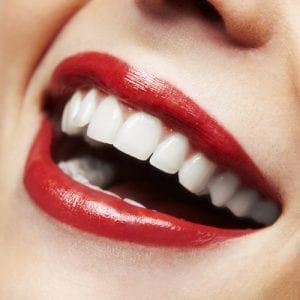The last thing you want to happen is to suffer from edentulism, which is the complete loss of your teeth from the top to the bottom parts of your mandibles. Unknown to many, this remains a major problem among seniors or older adults, even in light of the advances of modern dentistry. It affects millions upon millions of Americans at present. This is the reason why so many are availing of permanent dentures to deal with this unknown epidemic of teeth loss.

If you’re dealing with severe tooth loss due to old age, bad dental hygiene, plaque, periodontal disease that has escalated into periodontitis territory, blunt-force trauma to the teeth due to a car accident, and so forth, then there are permanent denture options available to you as well as other services related to Prosthodontics or cosmetic dental restoration. You should avail of them post-haste either by dental insurance, the Affordable Care Act, out-of-pocket dental service payment, or dental tourism to Thailand.
Why Should You Get Permanent Dentures?
If you leave your incomplete smile and missing teeth untreated, it will only get worse over time. To wit:
- Bone Loss and Degradation: Due to the strength of biting forces on the gaps of your teeth, your jaw will suffer from bone loss and degradation, which will affect your appearance, jaw line, chin length, and your bite as you grow older.
- Worsened by Periodontal Disease: This can also be worsened by the presence of periodontal disease (either gingivitis or periodontitis) that make your gum line recede and loosen the tooth root’s connections to your jaw bone.
- Aesthetics and Speech: As for immediate reasons, you should get dentures to improve or retain your self-confidence, speech, and appearance. Missing teeth can alter not just your looks but also the way you speak and the way you act.
- Behavior and Self-Confidence: You’re less likely to smile if you’re self-conscious about your missing teeth. Your ability to pronounce words and create sounds is also affected by the number of missing teeth you have, leading to further embarrassment.
What Can Be Done About This?

You only had one alternative in the past when it comes to dealing with lost permanent teeth. You should get dentures.
You can also get a root canal to save your teeth in case their tooth root finally becomes inflamed but back then endodontic treatment was infamously painful, so many people opted for either false teeth or dental bridge work (wherein you turn the surrounding teeth into abutment by shaving them down then placing a crown over them, with the middle crown serving as the bridge between the gap).
The denture has been around for quite some time. They’ve been available since the dawn of recorded history, in fact. They’ve worked well in your parents’ generation and the rest of your ancestors. However, you now have other choices available to you to save your teeth, mouth, and smile.
Choose wisely when it comes to picking between dentures (permanent dentures or temporary dentures) or the best alternatives to permanent dentures as outlined below.
Types of Dentures
There are two types of dentures. There’s the temporary or removable denture and there’s the permanent or affixed dentures that you can’t remove.
- Temporary Dentures: You’re probably seen removable oral appliances the most in comedies. The false teeth that your grandma or grandpa puts inside a glass of water before they sleep. These removable dentures of yore shouldn’t be confused with temporary dentures. These immediate dentures are temporary stand-ins of sorts. They’re typically utilized when you get one or more severely diseased and damaged teeth that need to be replaced, but you need stand-ins in the meantime to take their place while the real permanent solution to your toothy dilemma is prepared.
These dentures are mold prior to you undergoing surgery. They’re placed immediately after teeth extraction or removal of broken tooth bits. They’re also put in your mouth when you’ve already lost your tooth or teeth. It’s there to maintain the shape of your face and gums during the healing process. They ensure that your teeth won’t crowd into the freed space, resulting in wider gummy gaps between them. If you don’t want your bite and face to change drastically as you heal, these dentures are called for.
As noted above, any missing teeth can lead to your teeth widening the gaps between them as they slowly but surely shuffle towards the empty space where your teeth used to be. As they heal, your gingiva or gums tend to shrink and change. You need the temporary dentures to keep them from changing too much. However, they should be replaced by more permanent ones ASAP because they aren’t fitted properly and are more of a stop-gap solution until you get better dentures in place.
- Permanent Dentures: Meanwhile, you have the permanent variety of denture. Also known as conventional dentures, these false teeth appliances are molded in accordance to your mouth shape at the time when your gum tissue has completely healed after the tooth extraction/s or after your teeth has fallen out for whatever reason (severe periodontal disease, a car accident, a boxing match, a mugging, falling off the stairs, or domestic violence).

Gum healing typically occurs 6 to 8 weeks after oral surgery or teeth fallout. As such, these dentures (whether they’re removable or glued onto your mouth with your remaining teeth) are made to fit perfectly and won’t feel as uncomfortable as a mouthful of marbles compared to your temporary denture appliances. These permanent dentures won’t pop out like in the old movies. You won’t have to keep them in a glass of water on your bedside table. Unless you can only afford those outdated denture types, these ones will stay in your mouth!
Here’s how the permanent denture installment process works. Your dentist will first assist you in shopping for the best denture that suits you. It depends on how many teeth you want replaced or removed then replaced. Then, during follow-up visits, the good doctor will make a mold or impression of your jaws for a wax bite impression. A plastic model will then be made from which your new teeth will be fabricated. These permanent dentures are then mounted onto your gums. They’re made from tooth-and-gum-colored acrylic plus plastic that looks and feels realistic.
Alternatives to Permanent Dentures
There are alternatives to permanent dentures you can avail of depending on the severity of your edentulism.
- Dental Bridges: A dental bridge is an oral appliance that literally bridges the gap between one tooth to another. It can only be used when there are remaining teeth left, otherwise you’ll need to put in an implant. This particular alternative to permanent dentures is made up of two or more crowns (hollow false teeth shells you put atop either an abutment appliance or a shaved abutment tooth) for the teeth on either side of the gap of missing teeth.
The anchoring teeth that you have to shave into smaller teeth so that they’d fit inside the crowns are called abutment teeth. You place the crowns on the abutment anchorages to keep the false tooth or teeth hanging in the middle (like the deck of a bridge, hence the term) suspended. The false teeth that are anchored by the abutment teeth are called pontics. They can be made of porcelain, alloys, gold, or a combination of these materials.
There are three types of bridges:
- Traditional Bridge: The type of dental bridge discussed above. They use two abutment teeth as anchorages for their deck or pontic. This is the most common bridge type.
- Cantilever Bridge: Only uses one abutment teeth because only one side of the missing tooth or teeth has an adjacent tooth or teeth. This is quite rare nowadays and isn’t recommended for use in the back of the mouth.
- Maryland Bonded Bridge: This resin-bonded bridge is made of plastic teeth and gums, porcelain, and metal-fused porcelain with a porcelain or metal framework.
- Veneers: Veneers aren’t as effective as bridges when it comes to replacing missing teeth, but they are great appliances for prosthodontics when it comes to covering up existing teeth that you can’t whiten through bleach and whatnot. Instead of extracting misshapen teeth in order to make way for permanent dentures, why not attempt to save the tooth instead and improve its cosmetic appearance with veneers? This layer of material is placed atop a tooth.
Aside from aesthetic improvements, the veneer is also helpful when it comes to protecting the tooth surface from damage or further degradation (especially teeth that have been significantly cracked or destroyed). There are two main materials used to create a veneer—dental porcelain or composite. The dentist can either directly place the composite veneer so that it can be built up in your mouth or they could be independently fabricated by a dental technician’s lab then bonded on the tooth with Panavia or some other resin cement.
As for porcelain veneers, they can only be indirectly fabricated and not built up in your mouth like tooth filling. The closest thing to a veneer denture is the full veneer crown, which is described as a dental restoration that covers the entire tooth’s coronal surface. Meanwhile, laminate veneer is something closer to the veneer version of teeth filling and covers only the surface of the tooth. It’s best used to improve your dental aesthetics versus the protective functions of the full veneer crown.
- Jacket Crowns: The other name for a full veneer crown is the jacket crown. It can encompass a whole row of teeth or just one tooth. It’s a full porcelain, ceramic-covered crown that you can put on your misshapen teeth to cover them up and protect them. It protects the entire surface of the tooth, as described above (which includes the occlusal, lingual, facial, distal, and mesial surfaces). They’re known for their natural look and translucency.
This permanent dentures alternative is an ideal way of teeth rebuilding that’s a lot faster and more cost-efficient that putting composite material over teeth and shaping it like plaster. It’s the teeth restoration method of choice for rebuilding existing teeth that have been weakened by dental caries, tooth decay, or large fillings (which probably involved loads of drilling to enable them to fit). They’re also a good alternative to teeth whitening along with veneers.
If your graying teeth can’t be whitened by whitening strips, bleach trays, and in-office laser whitening services any longer, then you should just slap on a jacket crown over them. It might involve turning a tooth or several teeth into abutments to make the crown fit. They’re good for broken teeth or any teeth that’s not missing altogether (otherwise, you’re using a dental bridge instead of a jacket crown). They can even do minor orthodontics in the sense that they can realign existing teeth properly.
- Dental Implants: So you have loads of missing teeth that can’t be covered by veneers or jackets and you don’t want to turn your remaining teeth into abutments just to fit in a dental bridge over that gummy gap. Is getting permanent dentures your only option? If you have enough money (or if you’ve booked a dental tourism flight to Thailand), then you can opt for dental implants instead. They’re expensive, but they’re worth the money.
You don’t have to bond anything to your teeth. Instead, you’ll get the closest thing to a tooth replacement that works and functions like real teeth, complete with tooth root that’s embedded into your jaw. Like permanent dentures or permanent teeth, this teeth restoration method is meant to stay with you for life. It involves surgically cutting through the gum where your teeth used to be, drilling into the tooth socket, and installing a metal post or stud onto it.
From there, you’ll wait a few months to heal (unless you opted for the traditional approach, which necessitates multiple dentist clinic visits over the course of three to six months), put on an artificial abutment (that looks like a shaved abutment tooth used in dental bridge operations), wait a few weeks, and insert the crown that will now serve as your new teeth. It’s better than dentures because you have the artificial tooth actually anchored to your jaw.
At any rate, there you have it. Those are your options and alternatives for permanent dentures.
Thantakit International Dental Center is Thailand’s longest established dental center. Situated in Bangkok, our clinic is renowned across the world as a destination for world-class dentistry, with most of our patients flying to us from Australia.
Please contact us today and get a FREE dental consultation.












